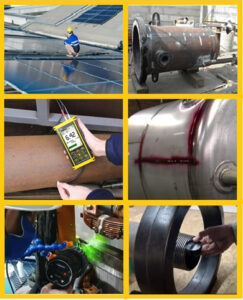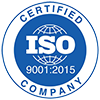NDT is a process wherein the material, specimen, or a part undergoes a test to inspect for defects that could fail in service without damaging material usefulness or serviceability. NDT is a critical inspection procedure that will define the examined material without causing damage to the original part. It is cost effective as well as component sale. Many NDT techniques are capable of locating defects and determining the features of the defects such as size, shape, and orientation
There are conventional and advanced various NDT equipment available in the Market.
NDT is applicable for various sectors like Oil & GAS, Marine, Power plant, Aeronautical Engineering, Industrial Manufacturing and civil construction.

Following are the common NDT methods usually apply for Industries:
- Radiography Test (Ganna Ray/X-Ray)
- Ultrasonic testing
- Magnetic Particle Inspection (MPI)
- Liquid Penetrant Testing (LPT)
- Eddy Current Test (ET)
Radiographic Testing (RT) is a non-destructive testing (NDT) method which uses either x-rays or gamma rays to examine the internal structure of manufactured components identifying any flaws or defects.
Ultrasonic testing (UT) is another method of non-destructive testing (NDT) techniques that send ultrasonic waves through an object or material. These high frequency sound waves are transmitted into materials to characterize the material or for flaw detecting
Magnetic particle Testing (MPI) another popular and low-cost method to perform nondestructive Testing of ferromagnetic material. Ferromagnetic is defined as “a term applied to materials that can be magnetized or strongly attracted by a magnetic field.” MPI is an NDT method that checks for surface discontinuities but can also reveal discontinuities slightly below the surface.
Liquid Penetrant Testing (LPT) is one of the most popular Nondestructive Testing (NDT) methods in the industry. It is economical, adaptable, and requires minimal training when compared to other NDT methods. Liquid penetrant testt check for material flaws open to the surface by flowing very thin liquid into the flaw and then drawing the liquid out with a chalk-like developer. Welds, plate, bars, pipes, castings, and forgings are also commonly inspected using liquid penetrant examination.
Eddy Current Testing (ET) is a popular and simple NDT method. Eddy current testing uses an alternating current coil to generate an electromagnetic field on the surface of the material that is being analyzed. Eddy current Test have found the most use on tubular and bar-shaped materials.




